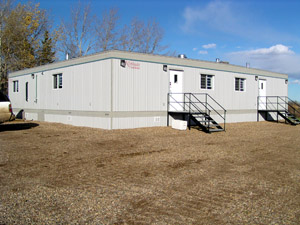
| EMEND (Ecosystem Management Emulating Natural Disturbance) |
 EMEND is a research site 90km north-west of Peace River, Alberta. Through large-scale forest manipulations EMEND addresses two main objectives:
EMEND is a research site 90km north-west of Peace River, Alberta. Through large-scale forest manipulations EMEND addresses two main objectives:
- To determine which forest harvest and regenerative practices best maintain biotic communities, spatial patterns of forest structure, functional ecosystem integrity in comparison with mixed-wood landscapes that have originated through wildfire and other inherent natural disturbances; and
- To evaluate these practices in terms of economically viability, sustainability and social acceptability.
EMEND was established in 1997 on the forest management areas of Diashowa-Marubeni International (DMI) and Canadian Forest Products (Canfor). Since its conception both companies have been the primary industrial sponsors of the project and have taken active roles in its development.
Located in northern Alberta, EMEND is composed of 4 distinct forest types:
- Deciduous dominated forests (>70% deciduous trees in the canopy)
- Deciduous dominated with a coniferous understory (deciduous dominated stands with coniferous understory reaching 50% of the canopy height)
- Mixedwood (coniferous and deciduous components making up 35-55% of the canopy each)
- Coniferous dominated forests (>70% coniferous trees in the canopy).
Overlaid on this forest mosaic are nine 10 ha harvesting and burning treatments:
- Uncut controls
- 25% harvest
- 50% harvest
- 75% harvest
- 90% harvest
- 98% harvest (conventional clearcut)
- standing timber prescribed burns*
- 90% harvest / 50% prescribed slash burn**
* As of 2005 there are 3 standing timber burns. More areas are will be burned when environmental conditions are favourable
** The slash burn treatments are 10 ha compartments harvested to 10% residual, slash dispersed throughout the area and then half of the compartment was burned and the other half left unburned.
All treatments were established in all four cover types and replicated 3 times across the landscape for a total of 100-10 ha compartments. See the EMEND site for more information about this project.
The new EMEND Research Facility was constructed in the summer of 2005. This permanent structure can accommodate up to 30 researchers and is complete with a kitchen, a sample processing lab, and a data processing lab. Although the facility is primarily for use by EMEND researchers, the beds at the facility can be rented by other researchers conducting studies in the region.
|
